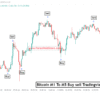-
×
 Buy Sell Gold M1 Tradingview
1 × $516.00
Buy Sell Gold M1 Tradingview
1 × $516.00
Subtotal: $516.00
 Buy Sell Gold M1 Tradingview
Buy Sell Gold M1 Tradingview
Subtotal: $516.00
 Buy Sell Gold M1 Tradingview
Buy Sell Gold M1 Tradingview
Subtotal: $516.00
$3,999.00 Original price was: $3,999.00.$412.00Current price is: $412.00.
If you want this indicator then you can pay crypto 399$ (Contact Admin) Click Here
Follow Bitcoin vs US Dollar dynamics. Real-time quotes will help you quickly react to market changes. The historical chart shows how the Bitcoin price changed in the past. By switching between different timeframes, you can monitor price trends and dynamics by minutes, hours, days, weeks, and months. Use this information to forecast market changes and to make informed trading decisions.
General information about each concept:-
Tradingview
Tradingview
Tradingview
Tradingview
Tradingview
Tradingview
Tradingview
MT4 Indicator
My Account

Reviews
There are no reviews yet.